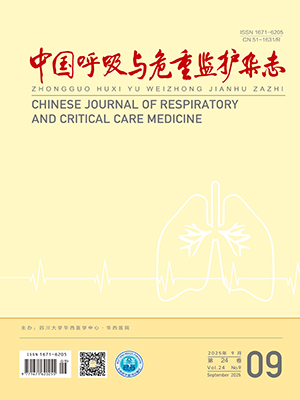Objective To investigate the changes and significance of serum inflammatory factors in coronary heart disease ( CHD) patients with obstructive sleep apnea-hypopnea syndrome ( OSAHS) , and the treatment effects of continuous positive airway pressure( CPAP) . Methods A total of 76 CHD patients in Renmin Hospital of Wuhan University from October 2007 to October 2008 were enrolled. Polysomnography ( PSG) was performed in these CHD patients to identify if they were complicated by OSAHS. The levels of inflammatory factors including TNF-α, IL-6, high sensitive C-reactive protein ( hs-CRP) in serum were determined in the CHD patients and 23 normal subjects. The CHD patients with moderate-severe OSAHS ( AHI≥15 episodes/hour) were treated by Auto-CPAP for 3 months and all parameters above were measured again. Results There were 41 /76 ( 53. 9% ) of CHD patients had moderate-severe OSAHS and were treated with CPAP. The levels of TNF-α, IL-6 and hs-CRP were significantly higher in the CHD patients than those in the normal controls ( all P lt; 0. 01) , and were significantly higher in moderate-severe OSAHS patients than those in the non-OSAHS CHD patients. Auto-CPAP ventilation significantly decreased the levels of inflammatory factors in the CHD patients with moderate-severe OSAHS. Conclusions An obvious proinflammatory state is detected in CHD patients, and is aggravated with OSAHS. CPAP is a useful treatment for CHD patients with mediate to severe OSAHS.
Citation: HU Ke,JIANG Yan,FAN Huijun,HE Jingya.. Effects of Continuous Positive Airway Pressure on Serum Inflammatory Factors in Coronary Heart Disease Patients Complicated with Obstructive Sleep Apnea-Hypopnea Syndrome. Chinese Journal of Respiratory and Critical Care Medicine, 2009, 09(4): 376-379. doi: Copy
Copyright © the editorial department of Chinese Journal of Respiratory and Critical Care Medicine of West China Medical Publisher. All rights reserved
-
Previous Article
An Introduction to Evidence-Based Medicine Glossary IV -
Next Article
An Introduction to Evidence-Based Medicine Glossary IV




